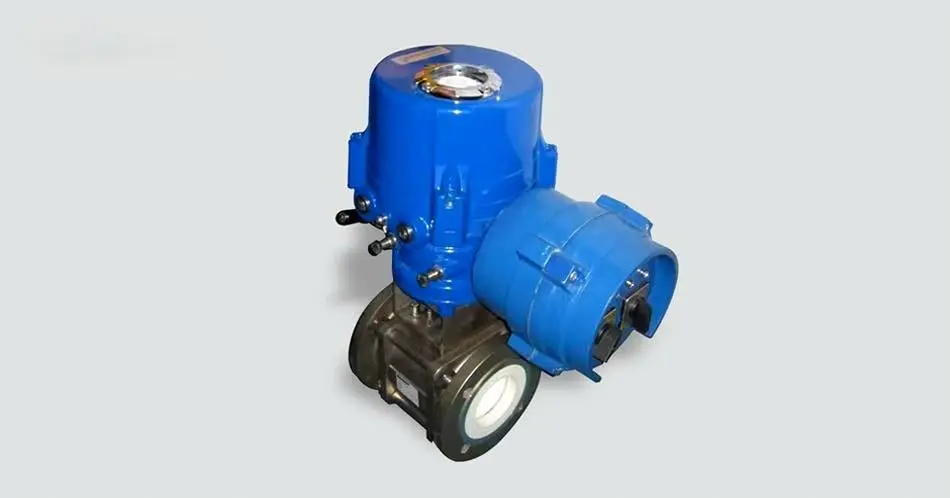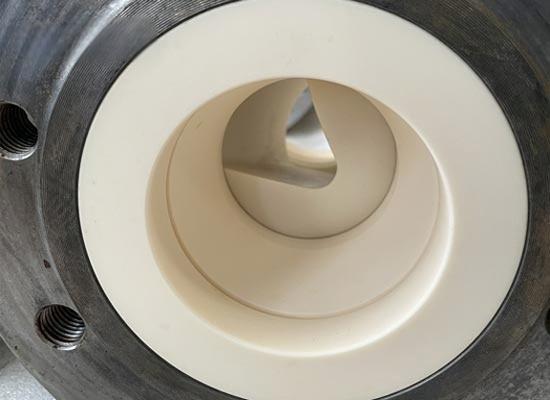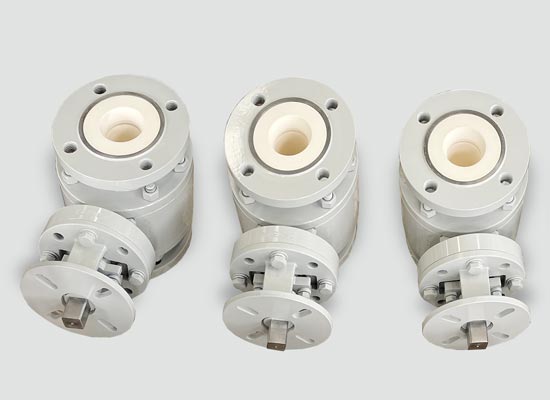Ceramic Valves in Thermal Power Plants: Advantages and Applications
In the vast, intricate landscapes of thermal power plants, where high-pressure steam, abrasive particles, and corrosive gases dominate, valves are essential for fluid control and safety. Among these, ceramic valves have gained prominence, standing out due to their unique material properties that address the challenges of traditional metal valves. As the industry pushes towards energy efficiency and sustainability, ceramic valves provide an advanced solution that not only improves operational efficiency but also aligns with environmental goals. This article explores the comprehensive advantages of ceramic valves, their role in thermal power plants, and their potential to shape the future of the energy sector.

Thermal power plants operate by converting heat from fuel combustion into electrical energy. This process involves extreme operating conditions, including high temperatures, pressures, and exposure to corrosive and abrasive media. Traditional metal valves, while reliable in many industries, often fall short in these extreme environments, suffering from corrosion, erosion, and material degradation. This shortfall leads to frequent replacements, costly downtime, and safety risks.
In response to these limitations, ceramic valves have emerged as a viable and effective alternative. Made from materials such as alumina, zirconia, and silicon carbide, ceramic valves offer unmatched hardness, wear resistance, and chemical stability. This article examines the fundamental properties and benefits of ceramic valves, their specific applications within thermal power plants, and their significance in advancing energy efficiency and environmental sustainability.
Ceramic materials, though ancient, have been adapted with modern technology to meet industrial needs. The ceramics used in valve manufacturing are not the same as typical ceramics like pottery; rather, they are engineered for high performance in demanding environments. Some common ceramic materials used in valves include:
Alumina (Aluminum Oxide): Known for its high hardness and wear resistance, alumina is one of the most commonly used ceramics in industrial applications. It offers exceptional thermal stability and can withstand high temperatures without losing structural integrity.
Zirconia (Zirconium Dioxide): Zirconia is renowned for its toughness, and unlike many ceramics, it has some degree of flexibility, which helps in preventing fractures. Its high melting point and resistance to thermal shock make it ideal for valves exposed to fluctuating temperatures.
Silicon Carbide: This material combines hardness and thermal stability with high resistance to corrosion, particularly in acidic and alkaline environments. Its hardness makes it suitable for handling abrasive media, such as those found in coal-fired plants.
Each of these materials contributes specific properties that make ceramic valves especially resilient. Their molecular structure allows them to maintain stability at high temperatures and resist damage from corrosive or abrasive substances, which are prevalent in thermal power plants. Compared to metals, ceramics also have lower thermal conductivity, which reduces heat loss and improves energy efficiency.

The design and construction of ceramic valves play a crucial role in their performance. A typical ceramic valve comprises several key components, each designed to withstand specific operational stresses. These include:
Valve Body: The body of the valve is often lined or fully constructed with ceramic material, providing a sturdy barrier against high-temperature and high-pressure media.
Valve Seat and Seal: The seat and seal in ceramic valves are particularly crucial for ensuring leak-proof operation. Made from durable ceramics, these parts resist wear from repeated cycling, ensuring longevity.
Stem and Actuator Interface: The valve stem and actuator interface must handle both mechanical stresses and heat exposure. In ceramic valves, these components are reinforced to maintain performance without succumbing to deformation or wear.
Ceramic valves come in various configurations, including ball valves, gate valves, and butterfly valves, each suited to different applications within a power plant. The ceramic components are manufactured through specialized processes like sintering, a method that compresses ceramic powder under heat to form a solid piece. These advanced manufacturing techniques improve the durability and precision of ceramic valves, making them suitable for high-stakes applications.
Ceramic valves bring numerous advantages that make them invaluable in thermal power plants:
High-Temperature Resistance: Ceramic materials maintain stability at temperatures up to 1,500 degrees Celsius, making them ideal for handling high-pressure steam without losing structural integrity.
Corrosion and Erosion Resistance: Thermal power plants are notorious for producing corrosive and abrasive byproducts. Ceramic valves resist chemical attacks from acidic and basic substances, as well as abrasion from particulate matter, reducing the frequency of replacements and associated maintenance costs.
Extended Lifespan: Due to their inherent strength and resistance to wear, ceramic valves last significantly longer than metal valves. This durability translates to reduced downtime, lower maintenance costs, and increased safety.
These advantages position ceramic valves as the preferred choice for environments where traditional metal valves would quickly degrade, saving costs and ensuring higher reliability over extended periods.

Within a thermal power plant, ceramic valves find application in several key areas due to their ability to handle harsh operational demands:
Steam Control: Ceramic valves are used in high-pressure steam lines, where they control steam flow and pressure. The high-temperature resistance of ceramic materials ensures consistent performance without the risk of material deformation.
Water Flow Regulation: Water used for cooling and various processes can be highly corrosive, especially if it contains treatment chemicals. Ceramic valves resist corrosion, ensuring safe and controlled water flow.
Abrasive Media Handling: Thermal plants often deal with ash and other abrasive particles. Ceramic valves effectively manage the flow of such media without succumbing to erosion, maintaining operational efficiency.
These applications illustrate the versatility and resilience of ceramic valves, showcasing their ability to improve operational control and minimize wear in critical areas of thermal power plants.
One often-overlooked advantage of ceramic valves is their contribution to energy efficiency. Due to their low thermal conductivity, ceramic valves retain heat within the system, reducing thermal loss and improving the overall efficiency of the power generation process. This property is especially valuable in thermal power plants, where maximizing energy conversion from heat to electricity is paramount.
In essence, ceramic valves help conserve heat energy, allowing more of it to be used for electricity generation rather than being lost through the valve components. This efficiency enhancement plays a small but significant role in reducing the overall energy consumption of the plant, aligning with industry trends toward greener, more sustainable energy production.
Several power plants worldwide have adopted ceramic valves to address operational challenges. Below are a few notable examples:
Coal-Fired Plant in Asia: A large coal-fired plant faced frequent maintenance issues with metal valves due to ash abrasion. After replacing them with ceramic valves, the plant saw a significant reduction in downtime, cutting valve replacement costs by nearly 60%.
Natural Gas Plant in Europe: In a natural gas plant where high-pressure steam lines corroded metal valves, ceramic valves were introduced. The plant reported an increase in operational efficiency due to fewer valve failures and improved heat retention.
These case studies highlight the practical benefits of ceramic valves in reducing maintenance needs, increasing efficiency, and extending equipment lifespan in diverse power plant environments.
While both ceramic and metal valves are commonly used in power plants, a comparative analysis shows that ceramic valves offer distinct advantages in specific applications:
Heat Resistance: Ceramic valves outshine metal in terms of thermal stability. While metals may weaken at high temperatures, ceramics retain their strength, making them more suitable for high-temperature environments.
Corrosion Resistance: Metal valves often require coatings to prevent corrosion, which can wear off over time. Ceramics, on the other hand, are inherently resistant to chemical corrosion.
Longevity and Cost-Effectiveness: Though ceramic valves have a higher initial cost, their extended lifespan and reduced maintenance requirements make them more cost-effective over time.
Environmental Impact: By reducing waste through longevity and heat retention, ceramic valves contribute to a plant’s sustainability goals, making them an eco-friendly choice.
These differences demonstrate why ceramic valves are preferred in situations that involve high heat, corrosion, and wear, while metal valves are reserved for applications where flexibility and lower upfront costs are priorities.
The demand for ceramic valves is expected to grow, particularly as the energy sector shifts towards cleaner and more efficient operations. As more thermal power plants aim to meet stricter environmental standards, ceramic valves will likely become even more valuable. Additionally, the rise of renewable energy sources, such as solar and geothermal, presents new opportunities for ceramic valve applications.
In geothermal power plants, for example, high-pressure steam and corrosive chemicals are common, making ceramic valves ideal for these conditions. Similarly, concentrated solar power plants, which generate high temperatures, can benefit from ceramic valves for heat retention and efficiency.
Ceramic valves represent a significant advancement in materials science applied to industrial settings. By offering a solution that is resistant to heat, corrosion, and wear, ceramic valves provide a more sustainable alternative to traditional metal valves. Their contribution to reducing maintenance costs, improving efficiency, and supporting environmental goals makes them a strategic investment for any thermal power plant focused on longevity and sustainability.
As the energy sector continues to evolve, ceramic valves will play a crucial role in enabling plants to meet energy demands while adhering to stricter environmental standards. The adoption of ceramic valves is not just a technical upgrade; it is a step towards a cleaner, more sustainable energy future.

Submit your demand,
we will contact you ASAP.

Sanxin New Materials Co., Ltd. focus on producing and selling ceramic beads and parts such as grinding media, blasting beads, bearing ball, structure part, ceramic wear-resistant liners, Nanoparticles Nano Powder

